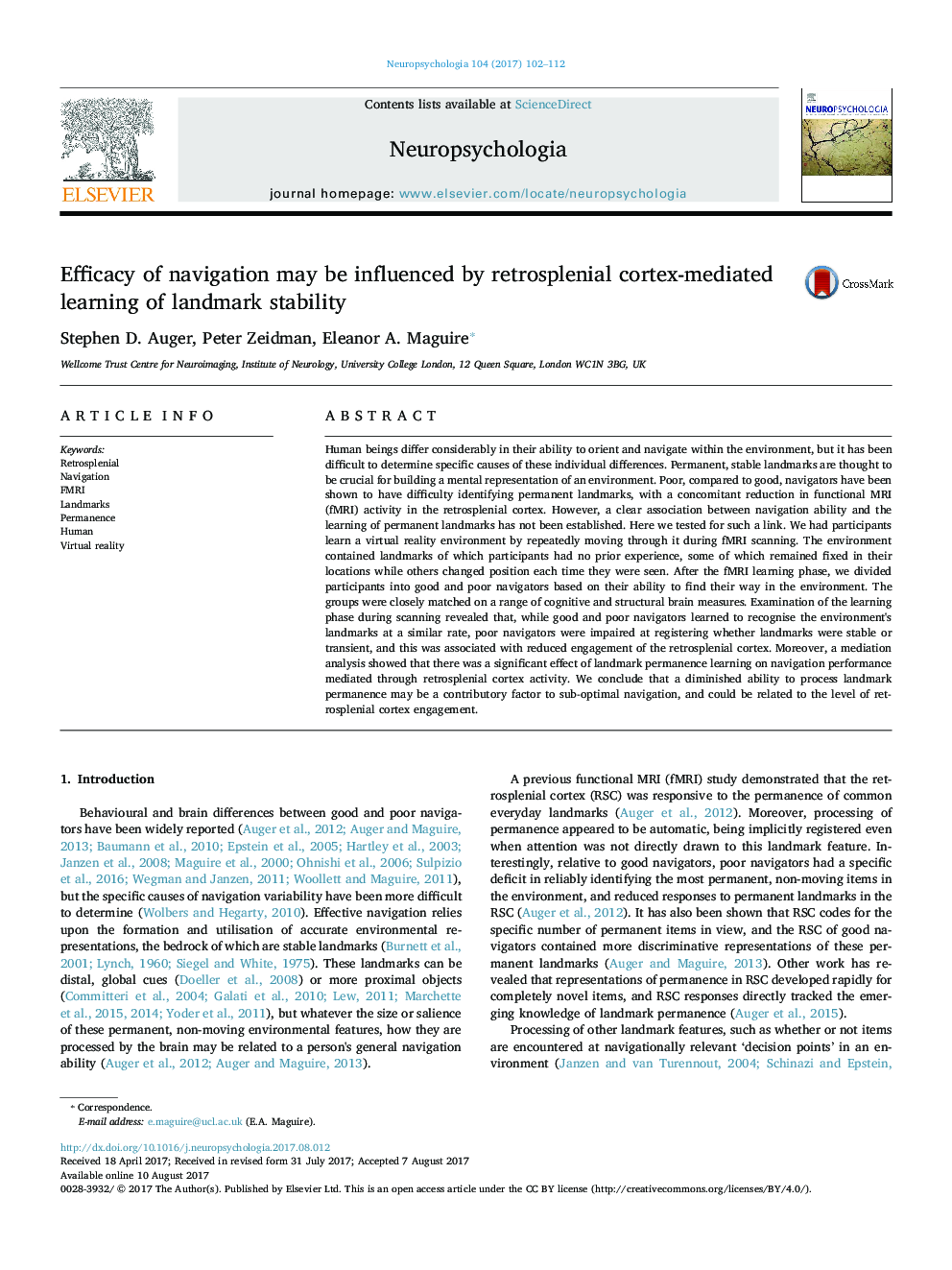| کد مقاله | کد نشریه | سال انتشار | مقاله انگلیسی | نسخه تمام متن |
|---|---|---|---|---|
| 5045116 | 1475551 | 2017 | 11 صفحه PDF | دانلود رایگان |
- People learned the layout of a virtual environment during fMRI scanning.
- Wayfinding was tested after the learning phase and good/poor navigators identified.
- Poor navigators were impaired at registering landmark permanence during learning.
- This was accompanied by reduced retrosplenial cortex activity.
Human beings differ considerably in their ability to orient and navigate within the environment, but it has been difficult to determine specific causes of these individual differences. Permanent, stable landmarks are thought to be crucial for building a mental representation of an environment. Poor, compared to good, navigators have been shown to have difficulty identifying permanent landmarks, with a concomitant reduction in functional MRI (fMRI) activity in the retrosplenial cortex. However, a clear association between navigation ability and the learning of permanent landmarks has not been established. Here we tested for such a link. We had participants learn a virtual reality environment by repeatedly moving through it during fMRI scanning. The environment contained landmarks of which participants had no prior experience, some of which remained fixed in their locations while others changed position each time they were seen. After the fMRI learning phase, we divided participants into good and poor navigators based on their ability to find their way in the environment. The groups were closely matched on a range of cognitive and structural brain measures. Examination of the learning phase during scanning revealed that, while good and poor navigators learned to recognise the environment's landmarks at a similar rate, poor navigators were impaired at registering whether landmarks were stable or transient, and this was associated with reduced engagement of the retrosplenial cortex. Moreover, a mediation analysis showed that there was a significant effect of landmark permanence learning on navigation performance mediated through retrosplenial cortex activity. We conclude that a diminished ability to process landmark permanence may be a contributory factor to sub-optimal navigation, and could be related to the level of retrosplenial cortex engagement.
Journal: Neuropsychologia - Volume 104, September 2017, Pages 102-112
